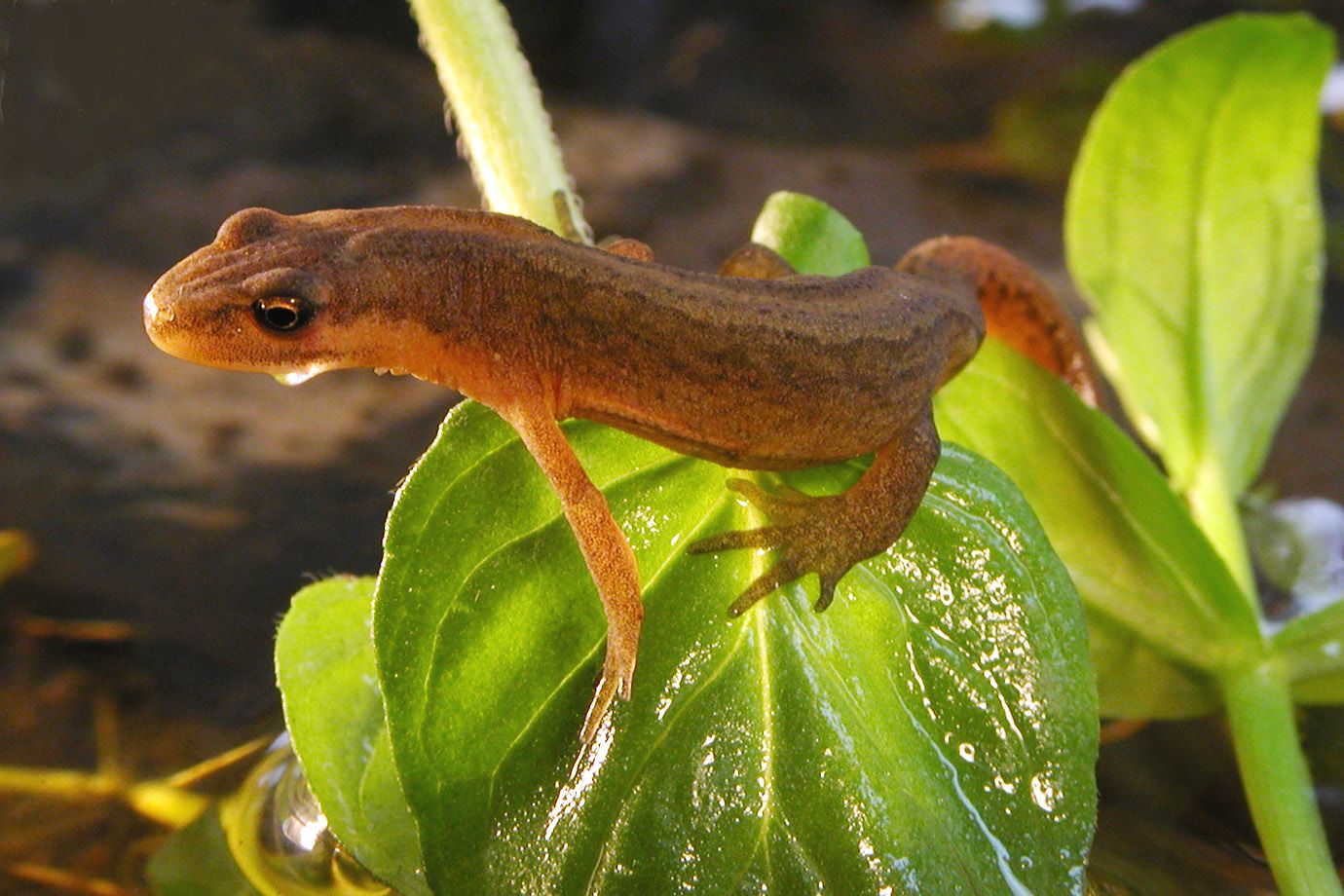
Smooth Newt
The Smooth Newt, (Triturus vulgaris) is the most common newt species of the Lissotriton genus of amphibians. L. vulgaris is found throughout Europe except the far north, areas of Southern France, and the Iberian peninsula.
Adult Smooth Newts emerge from hibernation on land from late February to May, and head to fresh water to breed. They favour ponds and shallow lakesides over running water. At this time both sexes of newt become more strikingly and colourfully marked, with vivid spots and orange bellies. The male also develops a wavy crest along the back and tail - the sexes are much easier to differentiate during the breeding season.
During courtship the male newt "displays" for his prospective mate by vibrating his tail in front of the female in a distinctive fashion. The male then deposits a sperm-containing capsule, known as a spermatophore, in front of his mate, who manoeuvres herself into a position whereby she can pick up the capsule with her cloaca - fertilization occurring inside the female. The female, thus fertilized, after a few days starts to lay eggs individually, usually under aquatic plant leaves at a rate of 7 to 12 eggs per day. Altogether, a total of 400 eggs may be produced over the season.
After two to three weeks (depending on water temperature), the eggs hatch to a larval form - a tadpole. For a few days the tadpoles live off the food reserves contained within their yolk sacs (left over from the egg stage).
Source: en.wikipedia.org/wiki/Smooth_Newt – 13.11.2011
Smooth Newt
The Smooth Newt is still closely connected with the water, also after its metamorphose to a land animal.









